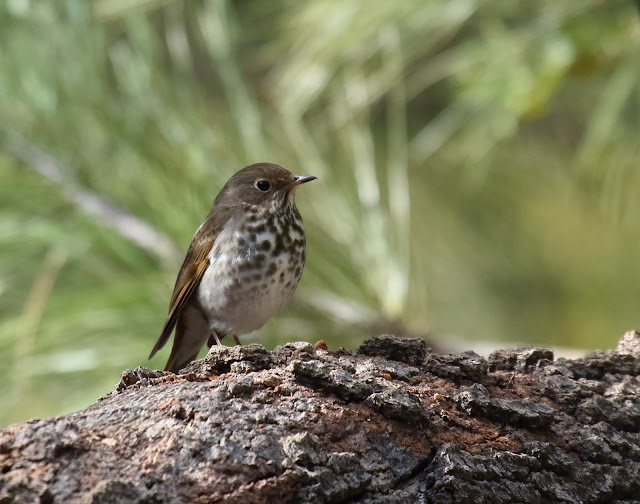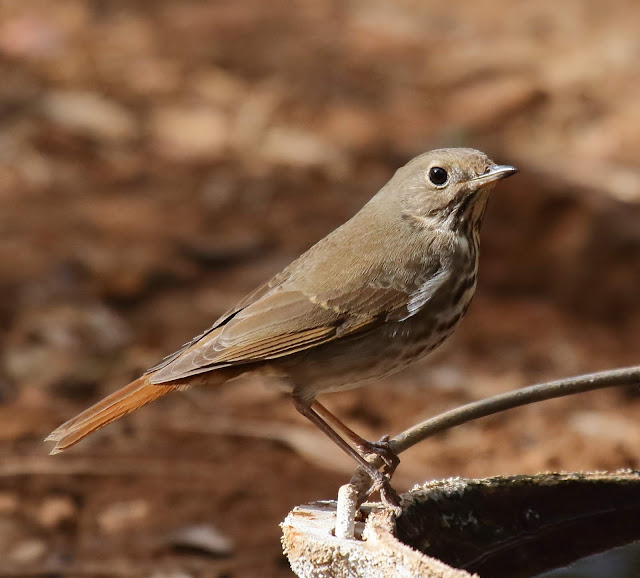Usually this species is kind of shy. They respond to pishing (Read: The secret of my birding success) by coming in for a look and often then disappearing into the dense woody brush. Or, they may stay back away in the understory trees giving a soft but distinctive "chup" call.
Frequently I only spot a single Hermit Thrush, or just a few, in my winter birding in gardens, parks, and woodlots. But I've detected (mostly heard only) nearly 50 in a winter's day several times in dense forest along the Oregon Coast. Here in southern California, a dozen would be a good winter number in riparian corridors in oak-pine woodlands in the mountains, or even in chaparral tangles.
San Diego is at the extreme southern end of the breeding range for this thrush. They prefer dense shady high mountain forests as breeding habitat, late May to early July. But for most birders in San Diego County, this species is mostly detected as a migrant throughout the county, and a winter visitor in higher elevations.
 |
| The American Robin is a thrush, too. Seeing them this close together is unusual so you don't often notice the large size difference. |














No comments:
Post a Comment
I really want to hear from you! I've changed settings (again) in order to try to make commenting easier without opening it up to spammers. Please note, however, that comments to posts older than 14 days will be moderated. Thank you.